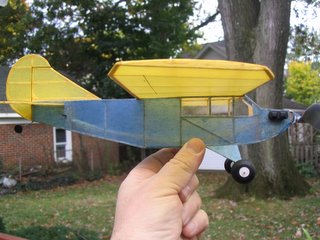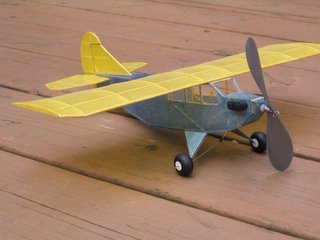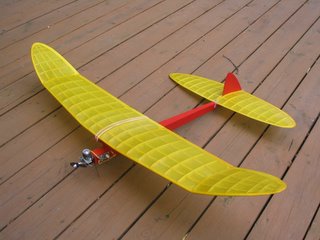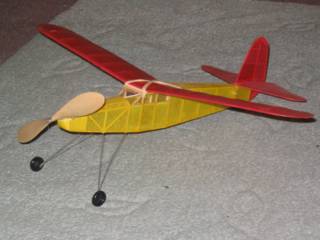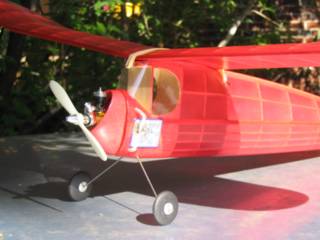


This is the DeHavilland DH-6, designed by Walt Mooney. The plans are available from Peck Polymers in the Walt Mooney Bag of Peanuts. This is a peanut scale model designed for indoor flying. This one has flown very well at the Teaneck Armory, Teaneck, NJ. The wheels are an old set of Fulton Hungerford wheels that I purchased many years ago. The tissue is white Japanese tissue. I printed the linen color, and the makings, on an injet printer. I created the markings in a graphics program on the PC. The tissue was not water-shrunk or doped. The propeller is laminated basswood.



